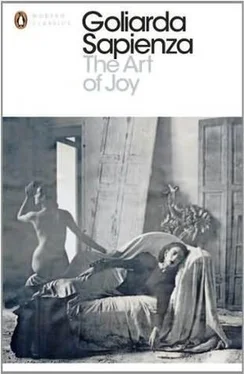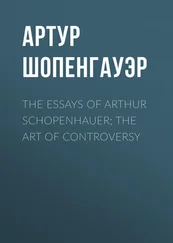‘There you are, sit right here, signorina . If you feel sick or something makes you uncomfortable during the trip, see this? It’s a receiver: pick it up and talk into it. That way I can hear you through the glass if need be.’
‘Did you hear that, princess? If you hurt yourself — because this thing runs; it’s not like a carriage, it runs like the devil — just lift up that tube and tell him.’
‘But who is he, Mimmo? An officer?’
‘No, a driver is … is like a coachman … I’ll say goodbye now, princess. I know we won’t see each other again. This carriage-automobile is grand and Mother Leonora is watching over you. But whatever you may need — by God’s grace you are able to write — know that I am here. Remember: Mimmo Insanguine, gardener at the convent of the Sisters of the Sorrowful Mother, Sciarascura. Remember that. Farewell, princess.’
The coachman drew my hand from Mimmo’s, saying gently, ‘Forgive me, signorina , but it’s getting late.’
And he closed the door. Mimmo’s hand lost, I clung to the window glass and looked at him: his arm was raised in farewell. I watched him until his large body, sheathed in brown velvet, blended among the tree trunks, merging with the oaks that surrounded the convent’s immense lava wall.
When Mimmo was taken from me, swallowed up by that sea of oaks, a great weariness made me slump on that soft seat, softer than my bed and all the sofas and chairs in the music room. The carriage — what did Mimmo say it was called? — was like a small room in dark velvet. There were even windows with pleated shades, which filtered in a gentle green light like the leaves in the woods do when the sun is high and scorching. Now that I had said goodbye to Mimmo, I closed the shades on that window as well. What good did it do to look at all those mountains, as bare as Sister Teresa’s bald head? I had seen it for myself, that head! How had it happened? It was very hot, I had gone to the lesson way too early and she had hastened to put her coif back on.
‘Oh Modesta, no, you shouldn’t enter like that without knocking. No, no, you mustn’t do that!’
‘But I knocked…’
‘Well then, that tells me I’m getting deaf, as well as blind! It’s high time, for that matter. I’m really beginning to feel I can’t take any more of these exercises and scales, all those stupid girls banging the keys as if they were monkeys and not God’s creatures … Bah! All in all, growing old isn’t as bad as they say, Modesta. There’s the advantage of no longer seeing Sister Costanza’s ugly puss, may God forgive me, of no longer hearing … but don’t get me started! Plus, as you see, only old age has allowed me the consolation of wearing this light coif when the sun is so hot. But come, let’s get started. You keep me talking here and nothing gets accomplished. Let’s go, in groups of four: one, two, three, four … one, two, three, four…’
She had been right to close those green shades and not see Sister Teresa’s bald head multiplying up, up, amid the dust and heat, to where the last cranium joined the sky … Terrified, she raised her hands to her head. No, they hadn’t shaved her. The thick, sturdy braids were still there, having escaped Sister Costanza’s scissor-sharp fingers just in time.
‘You must call me Mother Costanza now, Modesta, say it: Mother Costanza…’
Or maybe now that she held the convent’s reins, the woman had had second thoughts and was chasing after her. Maybe she would stop the carriage with those strong hands of hers?
‘Does the signorina feel ill? If I may say so, I saw your head swaying left and right in the rear-view mirror and I took it upon myself to stop.’
‘No, I’m not ill, sir, thank you. It’s just that I have a hollow feeling here, in my stomach, and I feel drowsy.’
‘Don’t be alarmed, signorina . It’s nothing. The automobile has this effect on all the women and young ladies. Here, sniff this little bottle. Now I must get back to driving because it’s very late. They’re expecting you at the villa. I see you’re feeling better. Good! You wouldn’t think so, but these salts work. Now you know that they’re here in the armrest in case you feel ill again. See, there’s ammonia in this little round bottle.’
He was kind, that coachman, and once she sat up straight, the automobile ran so swiftly that Mother Costanza would never be able to catch up with a carriage that, as Mimmo said, ran faster than the wind.
Repeating to myself I have to sit up straight; otherwise the man inside the glass enclosure will stop again , I fell asleep.
When I opened my eyes the glass enclosure was still full of light. But there was no sign of the gentleman … the driver, that’s what he was called. The automobile was still moving, however. Placing her hand on the wall to feel the velvet again, she felt something silky smooth instead. That unexpected touch made her open her eyes. She was no longer in the small, dark velvet room speeding along. This one was stationary and was much larger, and the walls, though covered with fabric like those of the automobile, did not have those little windows all around, only a single, very large one, barely shielded by a length of white transparent cloth. Just like the wedding veil the novices wore when they went to the altar for the divine marriage ceremony.
She wanted to jump out of bed and run to look outside, but she restrained herself. Who knew if it was permitted by the rules of the house? She had learned to be prudent, and although her stomach began complaining of hunger, she stayed where she was and settled for just moving her eyes. Her suitcase wasn’t there, but her books were arranged neatly on a small desk, so glossy it looked like glass. The picture of Saint Agatha hung above her, a little below the large crucifix in the middle of the wall. Her smock was arranged so carefully on a small chair at the foot of the bed that if it had had a head it would have seemed that she was sitting there watching herself. Slipping her hands under the blanket, she felt her coarse nightgown and the bands binding her chest. Her hair had been spared, but those bands, it seemed, she had to keep. Never mind! But who could have arranged everything so neatly while she slept? As if in answer to her question, the door opened and a young girl wearing a smock and a white cap — had she ended up in another convent? — entered the room, smiling. The smile reassured her: she had never heard of being allowed to smile like that in convents, brazenly showing one’s teeth.
‘Please excuse me, signorina , the Princess wishes you a good morning and wants to know if you slept well and if you’re satisfied with the way I arranged your things.’
I didn’t know what to say. Could I speak, or was it better to remain silent? But seeing that her smile was wilting into a pout, I got up my courage and said: ‘Very satisfied.’
The smile reappeared.
‘Thank you, signorina , I will let the Princess know. The Princess asks me to tell you that you may do whatever you wish: go out, walk in the garden, explore the library, the music room. And if you’re hungry, you may go down to the kitchen where you will find the cook at your disposal … Here is a sheet of paper. It’s for you, so that you will know how to act. May I go now? If you need me, pull that cord to your left and I will come right away. I’m very swift, signorina , so swift that the Princess has honoured me by calling me Argentovivo, Quicksilver. She never calls me by my real name, only that one. Oh, by the way, my name is Luigia. The fact is, I’m not from here. And as the Princess says — I myself would never presume to pass judgement on the town I live in — the women here are slow, if not somewhat lazy … As I was saying, I was born in Tuscany, in Poggibonsi, to be exact. There, signorina , if you don’t hustle, you don’t eat, my dear signorina …
Читать дальше











